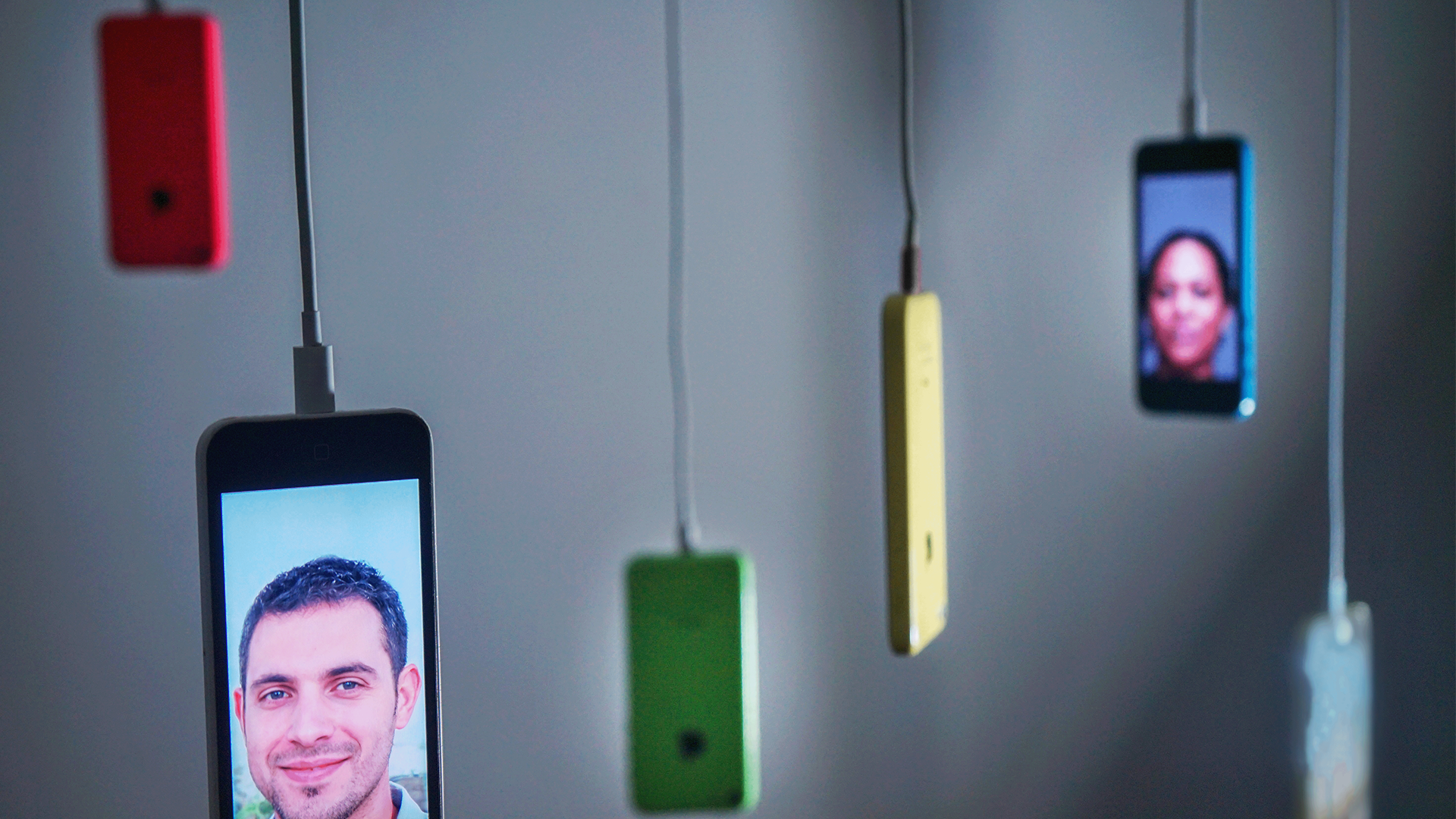Who wants to earn pennies? The Mechanical Turk crowd
Léo Huet
Video installation

When all our digital devices work ultra-fast and optimized, few of us wonder who is in control. Indeed, who intervenes before an algorithm makes a decision? Who trains and nurtures AI? All over the world, gig-workers supervise, measure, and optimize digital technologies. These people, very poorly paid, perform small tasks in a row on platforms like Amazon Mechanical Turk. The Mechanical Turk was a chess-playing automaton that toured the world in the 18th century. Presented as an autonomous machine, there was actually someone controlling the automaton. What is at stake with the gig-working economy is similar, the people engaged in piecework are hidden, made invisible, behind the machines they improve. The installation presented here brings together testimonies from gig-workers, interviews with researchers, and attempts to highlight this phenomenon which, far from being new, remains problematic.
Biography
Young artist graduated from the master Arts, Digital Creation of the University of Aix-Marseille, Léo Huet explores through his practice and research the new forms of digital surveillance operated through social networks and online profiling orchestrated by the GAFAM. Between surveillance by image and by data, companies like Google collect hundreds of pieces of information about us and are able to predict our desires at any time. Through his practice, he positions himself in an act of resistance to digital injunction, what Bernard Harcourt calls the society of exposure. His installations try to give the public the keys to position themselves differently in the face of new surveillance issues.
Mentions
With the kind participation of Kashif Imteyaz and Luc Sigalo Santos.
Thanks to Théophile Simon for allowing the use of images from his report in the Philippines.
Thanks to Pauline Barraud de Lagerie, Julien Gros, Luc Sigalo Santos for
allowing the use of the title of their article "Who wants to earn pennies?" published in 2023.
With the support of halone.
References
The Mechanical Turk refers to the automaton designed by Johann Wolfgang Von Kempelen in 1770 that was supposed to play chess and beat human opponents.
In reality, there was a secret compartment that allowed a person to hide in the machine and control the automaton.
The human behind the machine, that's what the gig-worker is.
The largest gig-work platform, launched by Amazon in 2005, is called Amazon Mechanical Turk.
It is a platform that interfaces clients and workers, making them perform more or less complex tasks,
against a remuneration of the order of a few cents.
This work is based in particular on the research of Luc Sigalo Santos, a researcher in sociology and political science, Kashif Imteyaz,
a doctoral student in computer engineering, and Saiph Savage, director of the Civic AI laboratory, a laboratory focused on the future of work.
The images from the Philippines are taken from a report by Théophile Simon.
For more information on Luc Sigalo Santos' research, see the following articles:
- « Et pour quelques euros de plus. La marchandisation du temps », Pauline Barraud de Lagerie, Luc Sigalo Santos, 2018.
- « Qui veut gagner des centimes ? Les micro-travailleurs : derrière une foule de passage, une première ligne de précaires », Pauline Barraud de Lagerie, Julien Gros, Luc Sigalo Santos, 2023.
For more information on Kashif Imteyaz's Gig Sense project, see the following article:
- « An LLM-Infused Tool for Workers’ Collective Intelligence », Kashif Imteyaz, Claudia Flores-Saviaga, Saiph Savage, 2018
For more information on Saiph Savage's research on sousveillance and the "empowerment" of gig-workers, see the following articles:
- « Becoming the Super Turker. IncreasingWages via a Strategy from High EarningWorkers », Saiph Savage, Chun Chiang, Susumu Saito, Carlos Toxtli, Jeffrey Bigham, 2020.
- « Quantifying the Invisible Labor in CrowdWork », Carlos Toxtli, Siddharth Suri, Saiph Savage, 2021.
- « Designing Sousveillance Tools for Gig Workers », Maya de Los Santos, Kimberly Do, Michael Muller, Saiph Savage, 2024.
For more information on the International Labour Organization's report "Digital Work Platforms and the Future of Work": https://www.ilo.org/fr/publications/les-plateformes-de-travail-numerique-et-lavenir-du-travail-pour-un-travail
For more information on the conference "Le travail sur les plateformes numériques : en-deçà de l’emploi, au-delà du droit": https://irisso.dauphine.fr/fr/actualites/detail-de-lactualite/article/le-travail-sur-les-plateformes-numeriques-en-deca-de-lemploi-au-dela-du-droit.html
For more information on the documentary "The cleaers": https://www.arte.tv/sites/fr/corporate/les-nettoyeurs-du-web-the-cleaners/
TurkerView and Turkopticon are sousveillance tools designed by and for gig-workers.
Specific to the Amazon platform, they allow workers to rate clients on several points: remuneration, refusal rate, clarity of instructions,
speed of response, etc. These tools allow workers to organize, avoid bad payers, and optimize their work.
They therefore offer more power and possibilities to these workers.
